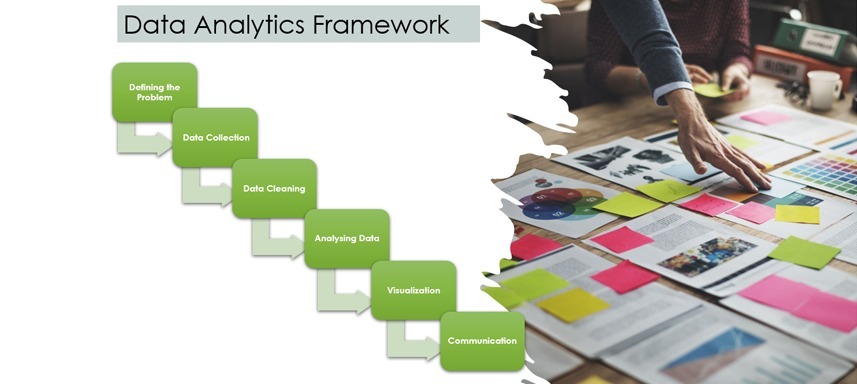Data analytics is the process of collecting, cleaning, analyzing, and visualizing data to gain insights that can be used to improve business decisions. The data analytics framework is a process that can be used to guide data analytics projects.
The data analytics framework consists of the following steps:
Defining the problem – The first step in the data analytics framework is to define the problem. What is the business problem that you are trying to solve? What are the specific goals of the project? It is important to clearly define the problem before you start collecting and analyzing data. This will help you to focus your efforts and ensure that you are collecting the right data.
For example, let’s say you are a marketing manager for a company that sells shirts. And you want to use data analytics to improve your marketing campaigns. The first step is to define the problem. What is the specific problem that you are trying to solve? Are you trying to increase website traffic? Are you trying to increase sales or are you trying to understand the issue of customer churn? Once you have defined the problem, you can start to collect data.
Data collection – Once you have defined the problem, you need to collect the data that you need to solve it. The data can come from a variety of sources, such as databases, websites, surveys or external data repositories. It is important to collect data that is relevant to the problem that you are trying to solve. You also need to make sure that the data is accurate and reliable.
For example, if you are trying to increase website traffic, you might collect data on website traffic, bounce rate, and conversion rate. You might also collect data on the keywords that people are using to find your website. However, if you are trying to understand customer churn, then you would need to gather customer purchase data and carts that were left out.
Data cleaning – Is the data clean and free of errors? If not, you will need to clean the data before you can analyze it. This involves removing errors, outliers, and missing values. It is important to clean the data before you start analyzing it. This will help to ensure that your results are accurate and reliable.
For example, if you are collecting data on website traffic, you might need to remove data from bots or from people who visited your website by mistake.
Analyzing the data – What insights can you gain from the data? What patterns can you identify? This involves using statistical and machine learning techniques to identify patterns and insights in the data. There are many different ways to analyze data. The specific data science and analytics techniques that you use will depend on the specific problem that you are trying to solve.
Visualizing the data – This can help you to communicate the insights that you have gained from the data. This can be done by creating charts, graphs, and other visualizations. Analytics and Visualization can help to make the data more understandable and can help to communicate the insights to stakeholders.
For example, if you are trying to increase website traffic, you might create a graph that shows the change in website traffic over time. In case of customer churn, you might create a line chart on number of customers over a period of time and a waterfall chart to understand the addition and drop in this number.
Communicating the results – What are the implications of your findings? How can you use the insights to improve the business? Once you have analyzed the data and visualized the results, you need to communicate the results to the stakeholders. This can be done through reports, presentations, and other communication channels. It is important to communicate the results in a way that is clear and concise. In this context story telling is very important. You need to make sure that the results and the story are relevant to the stakeholders.
For example, if you are trying to increase website traffic, you might create a report that outlines the results of your analysis and suggests some recommendations for improving website traffic. If you are trying to increase sales, then you need to create a report that analyses sales for different channels, different sales persons, conversion ratio and give some recommendations for improving it.
The data analytics framework is a flexible process that can be adapted to different problems. The specific steps that you follow will depend on the specific problem that you are trying to solve.
The data analytics framework is a process that can be used to guide business analytics projects. By following the steps in the framework, you can gain insights from data and communicate the results to stakeholders. This can help you to improve the business and make better decisions. Whether you are a data aspirant looking to understand career opportunities in data science and AI or working in data analytics team within an organization, following this data analytics framework increases the chances of success in your data analytics project.
The data analytics framework is valuable for businesses of all sizes. The data analytics framework consists of six steps: define the problem, collect the data, clean the data, analyze the data, visualize the data, and communicate the results. Each step in the framework is important. By following the framework, businesses can ensure that they are using data in a way that is effective and efficient.

